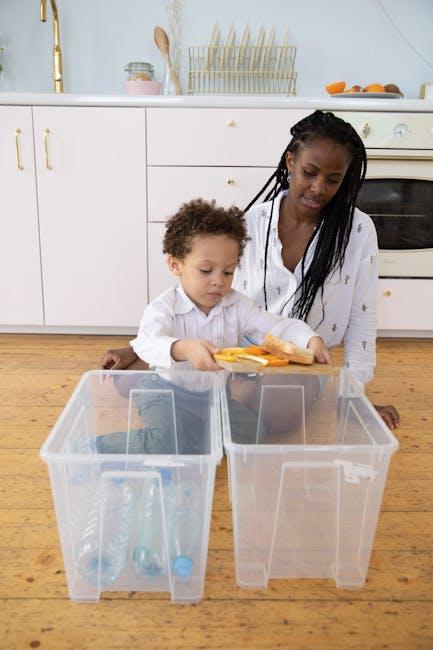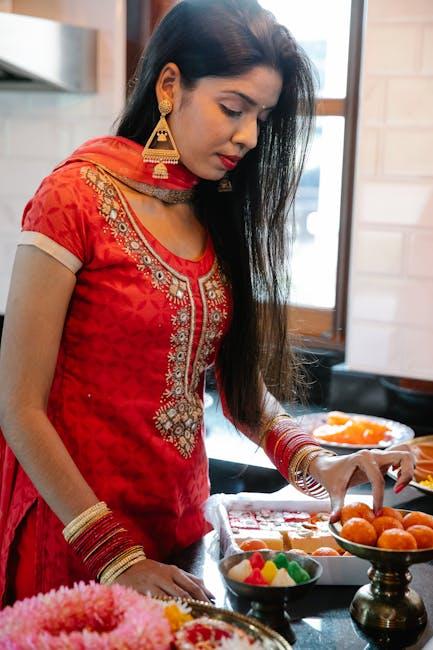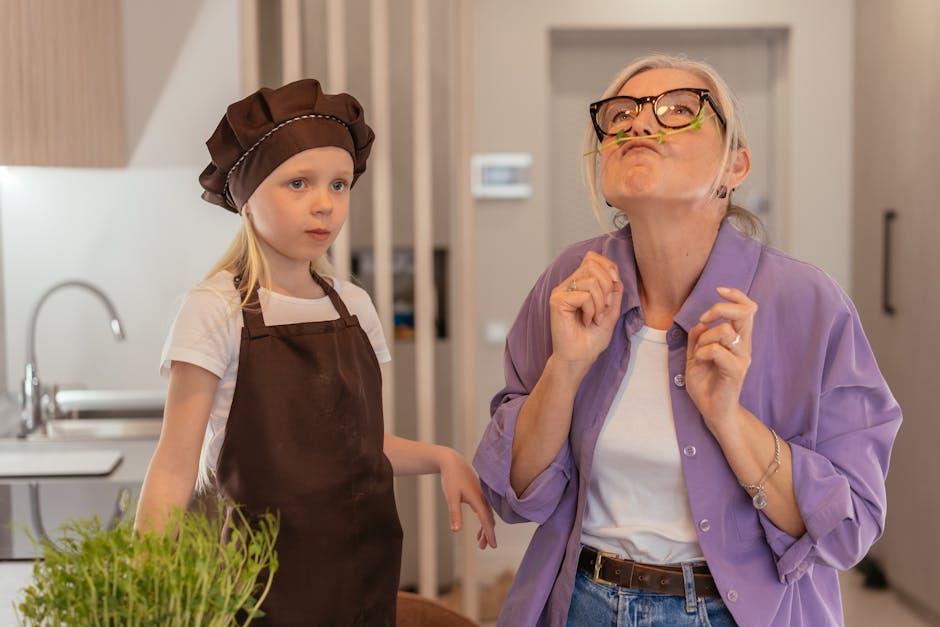There is something magical about the kitchen-a place where ingredients blend not only to create meals but also to weave stories, laughter, and memories. Beyond the sizzle of the stove and the aroma of spices, cooking has the unique power to transform simple acts into moments of connection. Whether it’s family members sharing tasks, friends experimenting with new recipes, or partners collaborating on a favorite dish, turning cooking into a bonding experience invites us to savor more than just food. It’s an opportunity to nourish relationships, build trust, and create a shared rhythm that lingers long after the last bite. In this article, we explore how the art of cooking can become an intimate and joyful gateway to deeper human connection.
Choosing the Right Recipes to Suit Every Skill Level

When planning meals together, it’s important to consider the range of experience around the kitchen table. Offering a variety of recipes that cater to beginners, intermediates, and culinary pros ensures everyone feels included and capable. For those just starting out, simple dishes with clear steps and minimal ingredients build confidence and enthusiasm. More experienced cooks might enjoy recipes that challenge their skills or introduce new techniques, making the process enjoyable and educational for all.
To make collaboration even smoother, try organizing recipes by complexity and ingredient count. Here’s a quick guide to help select dishes that match skill levels:
| Skill Level | Recipe Traits | Example Dishes |
|---|---|---|
| Beginner | Few ingredients, simple techniques, short prep time | Grilled Cheese, One-Pot Pasta |
| Intermediate | Multiple steps, moderate ingredients, new skills | Stir-Fry, Homemade Pizza |
| Advanced | Complex flavors, precise methods, longer cook time | Coq au Vin, Soufflé |
- Encourage open communication: Share preferences and challenges before cooking.
- Rotate roles: Let each person lead a recipe based on their comfort level.
- Celebrate small wins: Mastering a step is a reason to rejoice together.
Creating a Collaborative Kitchen Environment for Meaningful Interaction

Transforming your kitchen into a space where everyone feels welcome and involved can spark conversations and deepen relationships. Start by setting up shared tasks that encourage teamwork, such as chopping vegetables, stirring sauces, or assembling ingredients. Consider creating stations where each person handles a different part of the recipe, fostering a sense of contribution and pride. To keep the vibe light and fun, play background music that everyone enjoys, and keep distractions like phones aside to fully engage in the experience together.
Encouraging open communication and embracing imperfections make the kitchen a true hub for connection. Share family stories or cooking tips as the meal comes together-this can turn even simple dishes into meaningful memories. Below is a quick guide to roles that enhance collaboration and keep things flowing smoothly:
| Role | Task | Benefit |
|---|---|---|
| The Prepper | Washes and chops ingredients | Boosts efficiency and enables hands-on involvement |
| The Chef | Coordinates cooking timing | Maintains order and ensures delicious results |
| The Taste Tester | Samples and suggests adjustments | Keeps flavors balanced and encourages participation |
| The Socializer | Engages with stories and encourages conversation | Builds connection and fosters a joyful atmosphere |
Incorporating Cultural Traditions to Deepen Connections

Embracing the flavors and rituals of different cultures in the kitchen can transform ordinary cooking sessions into meaningful, shared experiences. By preparing traditional recipes passed down through generations, families and friends not only savor authentic tastes but also weave stories and values into every dish. This process invites everyone to participate-whether it’s rolling dough for Italian pasta, grinding spices for Indian curry, or folding dumplings in a Chinese feast-each step becoming a tactile connection to heritage and identity.
Integrating cultural traditions encourages learning and respect for diverse backgrounds, creating an atmosphere rich in conversation and discovery. Consider gathering around these activities to:
- Compare ingredients unique to each culture
- Teach younger family members secret family recipes
- Celebrate traditional festivals with signature dishes
- Create fusion meals that honor multiple origins
| Culture | Traditional Dish | Key Ingredient |
|---|---|---|
| Mexican | Tamales | Corn husk |
| Japanese | Sushi | Seaweed |
| Middle Eastern | Tabbouleh | Bulgur wheat |
| French | Coq au Vin | Red wine |
Turning Simple Tasks into Shared Moments of Joy and Learning

When you invite family or friends into the kitchen, cooking transforms from a routine chore into an engaging activity filled with laughter and learning. It’s a chance not only to share recipes but to pass down traditions and create new memories. Children, for example, develop vital skills like measuring, timing, and following directions, all while feeling a sense of accomplishment. Adults benefit from the calm rhythm of chopping and stirring, which fosters mindfulness and creativity. This shared culinary adventure helps strengthen bonds through collaboration and conversation, making every meal a testament to teamwork.
- Encourages communication: Everyone has a role, sparking discussions about flavors and preferences.
- Teaches responsibility: Assigning tasks fosters confidence and accountability.
- Creates lasting memories: Recipes become family heirlooms imbued with stories.
| Task | Skill Gained | Age Suitability |
|---|---|---|
| Measuring Ingredients | Math & Precision | 6+ |
| Mixing & Stirring | Motor Skills | 4+ |
| Setting the Table | Organization | 3+ |
Key Takeaways
In the end, cooking is more than just a means to fill our plates-it’s an invitation to connect, share stories, and create memories that linger long after the meal is gone. By turning the kitchen into a space of collaboration and warmth, we transform simple ingredients into lasting bonds. So next time you chop, stir, or season, remember you’re not just making food-you’re crafting moments that nourish both body and heart.











